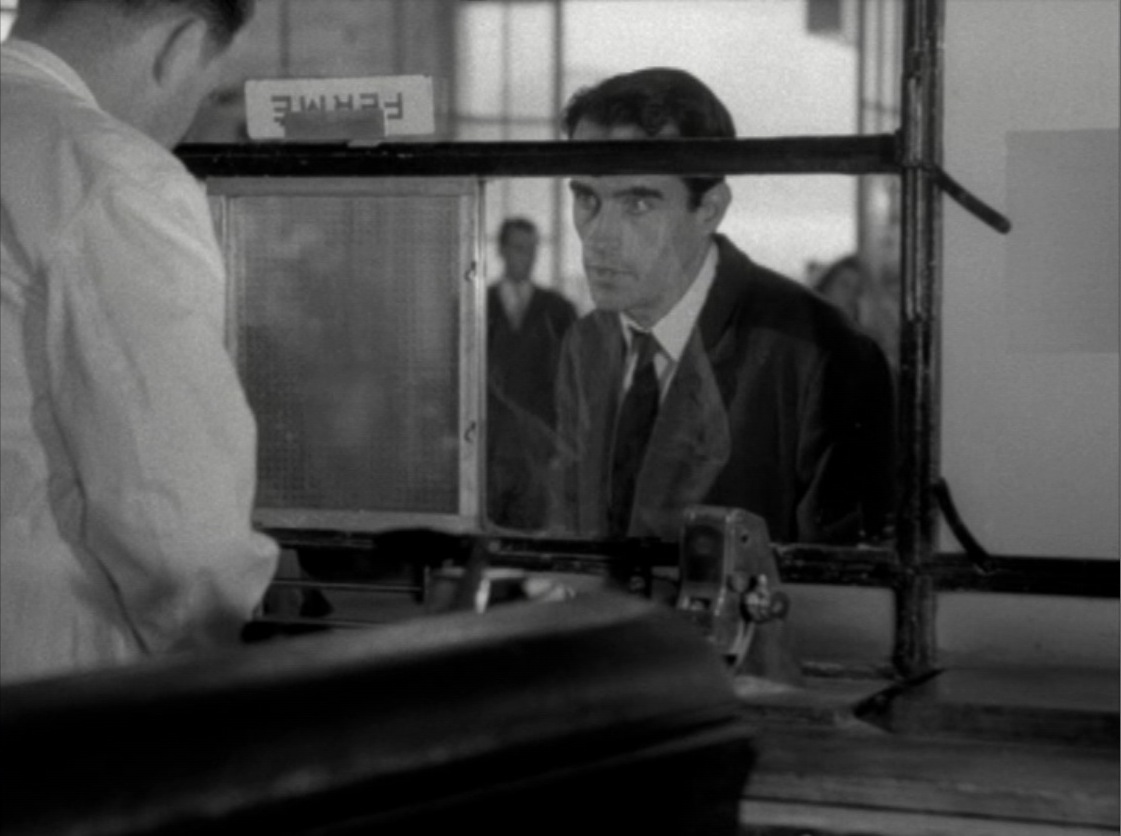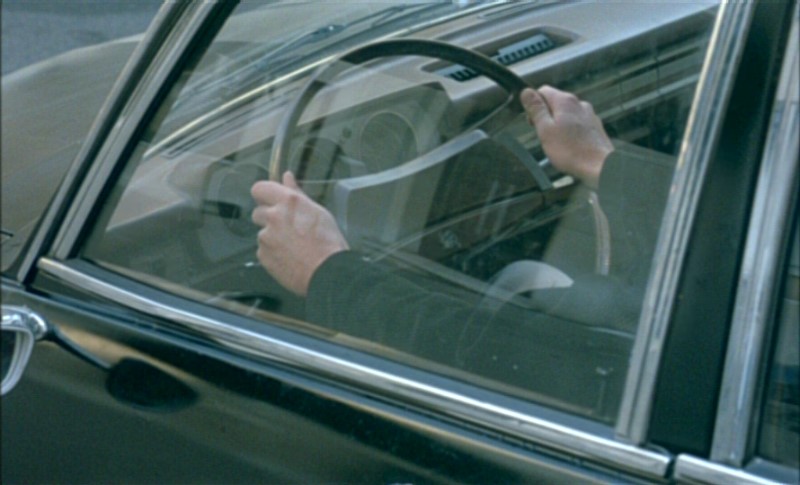Shmuel Ben-Gad commemorates filmmaker Robert Bresson, one of the greats.
“But I firmly believe in the cinema as serious art…as a way of taking a deeper look at things, as a kind of aid to mankind in discovering hidden aspects of itself.”—Robert Bresson

Almost everyone, it seems, tends to view film as simply a variant of theatre, though different, of course, in that film makes it far easier to change settings and offer spectacle, in terms of beautiful pictures, special effects, expressionistic camera work, etc. The most important dissenter from this view is the late French filmmaker Robert Bresson.
Bresson died in 1999; his year of birth is variously given but was probably around 1910. His films won many awards, and he was inducted into the French Legion of Honor.
Bresson made fourteen films. The first, Affaires publiques (1934), is a surrealistic short. This was followed by two conventional, well-made films, Les Anges du peche (1943) and the much sparer (and much less popular) adaptation of a Diderot text, Les Dames du bois de Boulogne (1945).
Bresson achieved his mature style with his fourth film, Diary of a Country Priest (1951), based on the novel by Bernanos. The film scholar James Monaco rather brilliantly describes Bresson as an ascetic aesthete, and the filmmaker himself wrote in his gnomic volume Notes on the Cinematographer, his way was “not to use two violins when one is enough.”
Bresson used the bare minimum means to depict what he wanted to show. In Pickpocket (1959), for example, the central character’s sojourn in England is indicated by two shots and one brief voiceover.

Bresson also refused to allow acting. He believed acting was proper to the theater, which depends on the presence of the live actors before an audience, but false to film, which does not have this means but instead uses images and sounds. What is required, Bresson said, is not a person acting but the image of a person.
Thus Bresson used non-actors, whom he called models. He rehearsed them repeatedly until they delivered their lines automatically, neither projecting nor suppressing emotion.
Bresson also avoided psychology. The people in his films do not behave weirdly, but there is almost no attempt to ascribe motives to the characters. In an interview, Bresson explained, “The psychologist discovers only what he can explain. I explain nothing.” For Bresson, film can be a psychological exploration, but to explain too much prevents or at least limits the exploration and can easily oversimplify human action and motivations.
In addition, Bresson’s films include no pictorialism or spectacle. To understand the reason for this, we must move from Bresson’s asceticism to his aestheticism. Bresson saw the essence of cinema as the interaction of image with image and image with sound. If an image is spectacular or too strong in any way, it cannot be transformed by contact with other images.

Bresson saw his task as writing with images and sounds, and thus for him a film is, in a way, like poetry in that each image receives its power and significance from its placement among others, much like a word in a poem. The filmmaker, in his view, is properly not a director of actors but an orderer of images and sounds.
This explanation may cause the reader to think Bresson’s films are artsy and pretentious but, in truth, they are not like that at all. Instead, his technique gives his films strength, unity, concentration, and a kind of craftsmanship, both rarefied and exemplary, that remarkably conveys a sense of mystery, of unseen forces, metaphysical or psychological, chance or destiny.
Bresson’s films are swift but unhurried. They are restrainedly intense while being interior instead of exteriorly dramatic. Images and sounds provide power to the story rather than, as is so often the case in films, the reverse.
Bresson did not start out with a theory but was a working filmmaker who arrived at his style because the conventional cinematic techniques did not accomplish what he wanted. He wanted to use the essentially realistic art of film to probe reality.
“The unknown is what I wish to capture,” is how he put it in an interview, and in Notes he wrote, ”Not to shoot a film in order to illustrate a thesis, or to display men and women confined to their external aspect, but to discover the matter they are made of. To attain that ‘heart of the heart’ which does not let itself be caught either by poetry, or by philosophy, or by drama.”
The proof is in the pudding: By his ordering of unadorned images and natural sounds, and by foregoing interpretive devices such as acting, expressionistic camera work, and background music, Bresson made films of profound interiority which, at least in Bresson’s filmic world, is synonymous with evoking a sense of mystery. To return to his book, in his films there is “movement from the exterior to the interior,” which leads to “One single mystery of persons and objects.”

A Bresson film is in fact much like life: seemingly simple but with mystery at the heart of it. And so in Diary of a Country Priest we perceive the inner spiritual development of a sickly and apparently failed priest. (The man who portrayed the priest said he did not realize the priest was a saint until he saw the film.) In Four Nights of a Dreamer (1971), based on a Dostoevsky tale of young, unrequited love, Bresson avoids the romantic melancholy or humorous condescension that would be so easy to slip into, and he ends the film on a note of proper, moving gravity.
In Au hasard Balthasar (1966), as the donkey Balthasar is passed from owner to owner we are shown human folly and wickedness but neither in a morose nor cheaply satirical way. The film is too tough for either. Proces de Jeanne d’Arc (1962), based largely on the transcriptsof the trial, is not typical hagiography but another tough film, providing no room for easy sentiment.
Beginning in 1969, with his tenth film, Une femme douce (another based on a Dostoevsky story), Bresson was finally able to afford color photography. Some see in these later films a coincidental turn towards pessimism. I do not think this is wholly true if at all, but in any case what is more notable, in my opinion, is that Bresson moved away from background music playing a significant role, eliminating it entirely from three of his last five films. This gives the films an even greater purity and affords even greater weight to his marvelous use of natural sounds.
In another development, Bresson moved from fades to straight cuts, which adds power to his ellipses and makes the films swifter and even more unified. The brilliant Lancelot du lac (1974) is a fine example of Bresson’s later style. We are in a cryptic universe in which Lancelot is both loyal to, and betrays, his king, where knights seek the sacred and turn to slaughter, where Guinevere detests an honorable, if ineffectual, King Arthur. All of this takes place not amid romanticized costumed panoply but in a concrete, powerfully realized world of neighing, sweating horses, clanking armor, deadly archers, and dark woods.

Bresson’s final film, L’Argent (1983), based on a Tolstoy work about the effects of two boys passing a counterfeit bank note, is his masterpiece, in my judgement. In L’Argent what one character calls the “visible god,” money (I suppose that Bresson, who was fluent in English and was familiar with Shakespeare, is consciously echoing Timon of Athens, Act IV, scene iii), creates a vortex of evil in a cool, interconnected world. At the same time the film perhaps hints that the invisible God is not absent.
The ending is particularly important to an understanding of Bresson’s films because they are so effectively unified that the final image, though not striking in itself, still provides a strong sense of completion. I think the final, hushed scene of L’Argent is Bresson at his most incisively enigmatic. He rejects both the alien and the inessential while masterfully ordering unadorned images and natural sounds.
As this brief analysis suggests, Bresson made profound films of great purity and mystery. It is certainly understandable that many people looking for a high art of film are disappointed by the overstatement and superficiality of mainstream films and the preciosity of the art house. It seems to me that Robert Bresson’s singular body of work proves that film can attain the highest level of art.
—Shmuel Ben-Gad

[…] of one of the best filmmakers after the incomparable Robert Bresson. (I have written about Bresson here) There is another of Rohmer’s films that I think is especially noteworthy, L’heure bleu (The […]
[…] This post was mentioned on Twitter by S. T. Karnick, Papitos Place. Papitos Place said: Appreciating Robert Bresson: 'Seemingly Simple but with Mystery at …: Follow the American Culture and S. T. Karn… http://bit.ly/9kKyaW […]